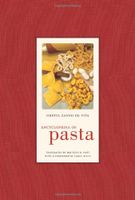🔥 Try our grilling cookbooks and save 25% on ckbk membership with code BBQ25 🔥
Introduction to the First Italian Edition
Published 2009
[
In the beginning was the gnocco. Our ancestors learned that by adding water to flour and subjecting the mixture to intense pressure, the resulting mass could yield both what we call pasta and what we call bread. The difference was only in the addition of a little yeast or salt. The mother of all the pastas is thus represented by an enormous gnocco. If allowed to ferment, it begins to become bread dough. If not, it can be worked into fresh noodles and dried. Or it can be formed into the true gnocchi of our gastronomic treatises. German best expresses this intuition: from the massive corpulence of the dumpling (Knödel, gnocco in Italian) derives the airy lightness of the noodle (Nudel).1
In this section
Advertisement
Advertisement


